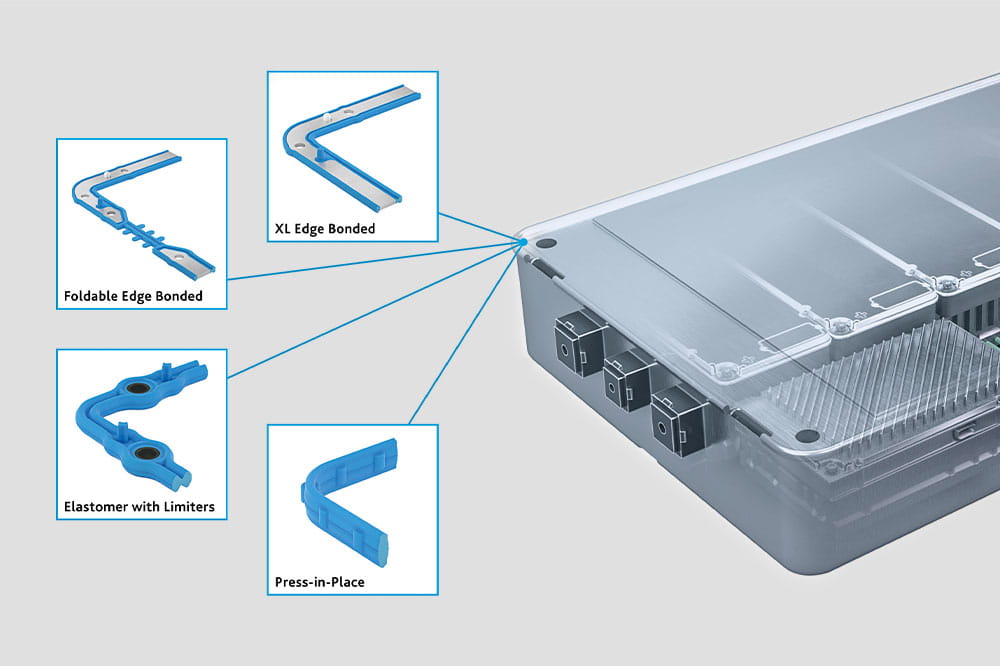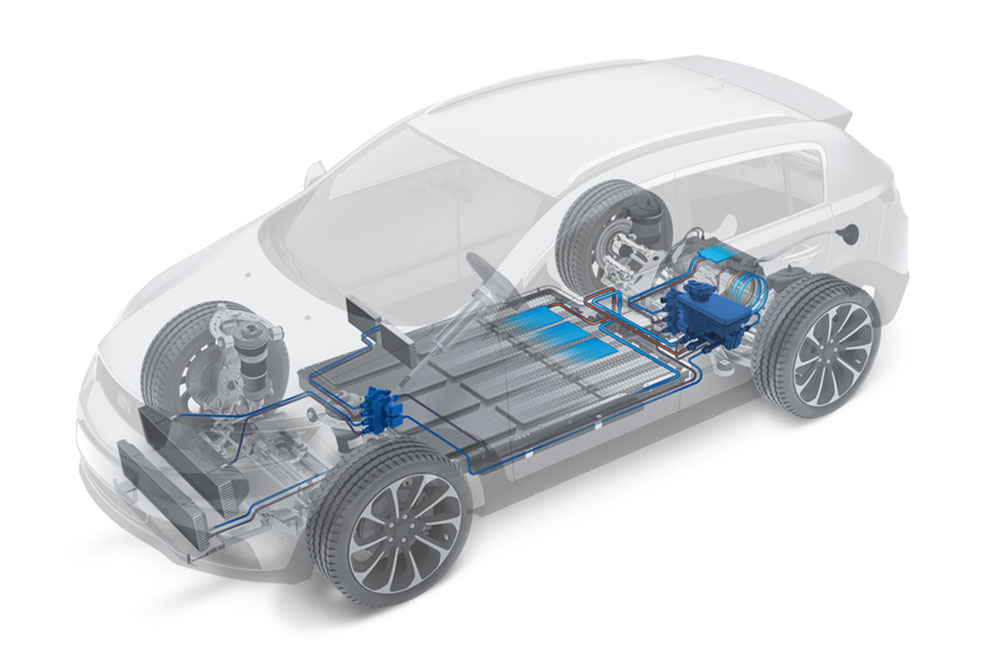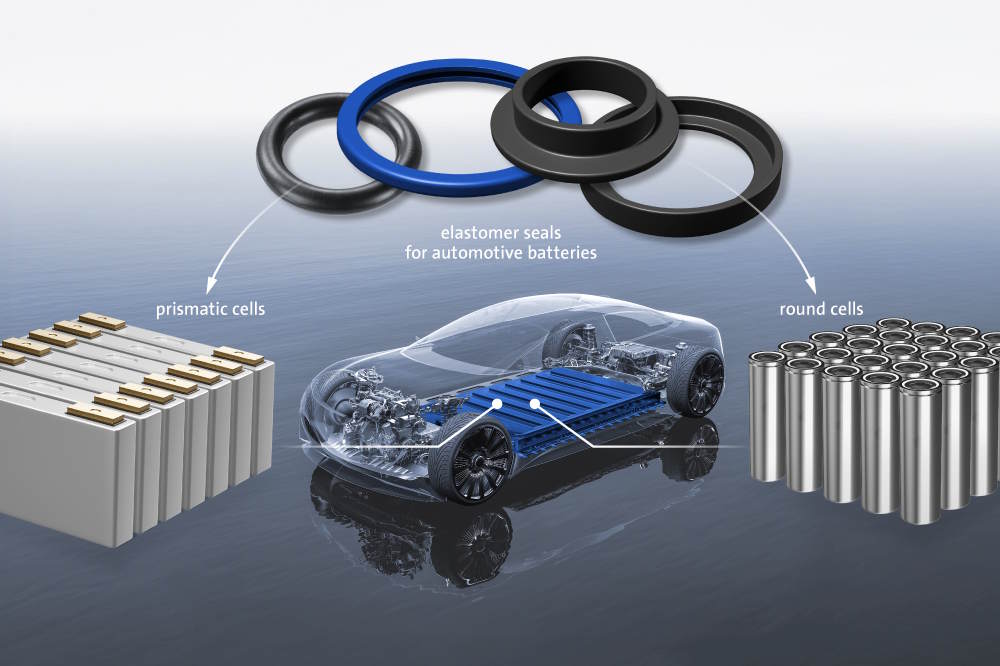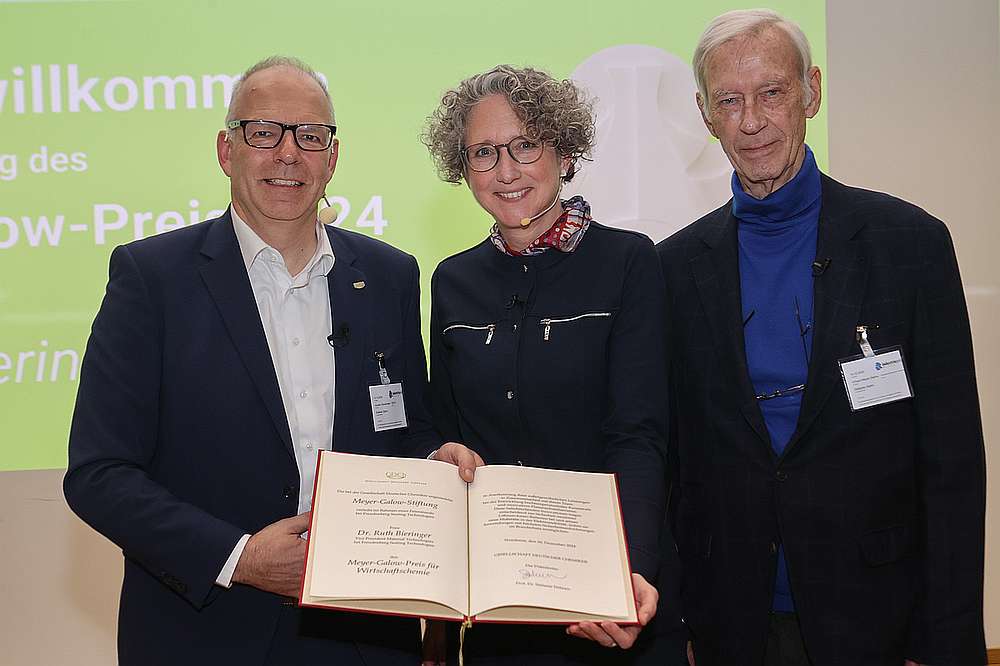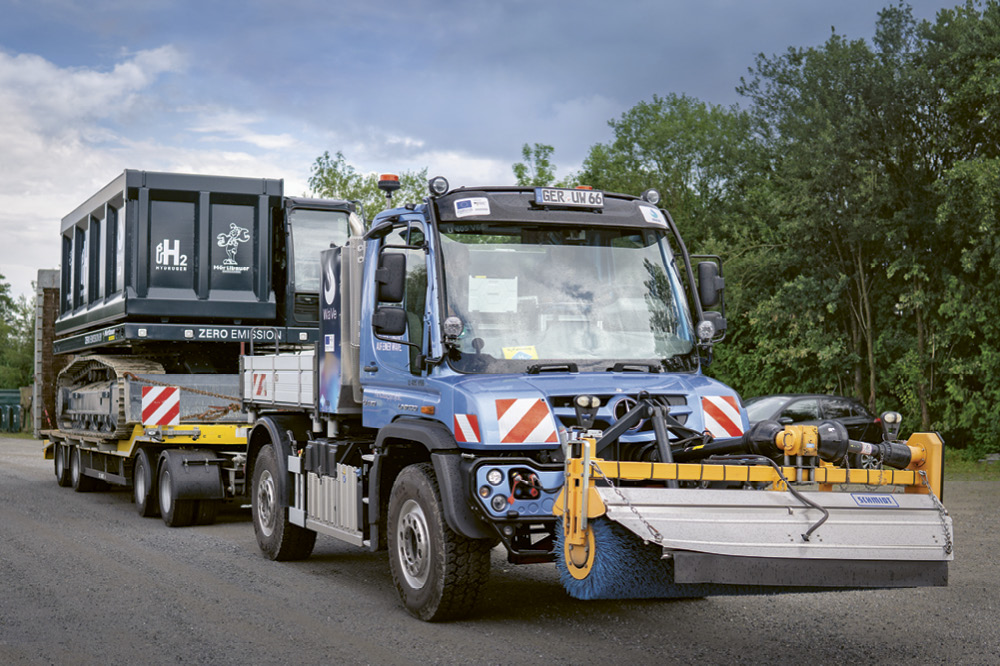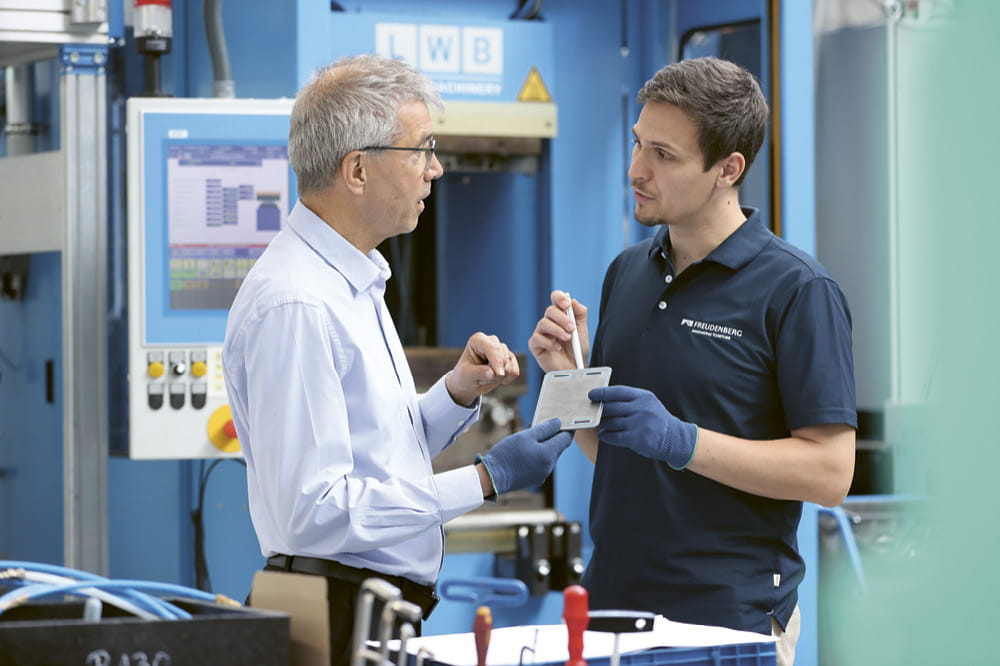Obtain news and background information about sealing technology, get in touch with innovative products – subscribe to the free e-mail newsletter.

07.06.2018 | Story
“The Turning Point Is on Its Way!”
A fuel cell only emits pure water vapor and is an attractive option for vehicle powertrains. A breakthrough was heralded some time ago, yet everyone is still waiting for it. Why Freudenberg Sealing Technologies is still betting on fuel cells – now more than ever.
A fuel cell – let me think…is it one of those ideas, an “innovation,” that has been hanging around for what seems like an eternity? But its breakthrough keeps retreating into the future? Something like the refrigerator that shops for you — which we have been promised for years? Yes and no. In fact, fuel cells have been around for a relatively long time. The first automakers started experimenting with the idea in the 1990s. “The assertion that the technology would be ready for series production in a couple years dates back to that time,” said Nils Martens, Senior Vice President Battery and Fuel Cell Systems Division at Freudenberg Sealing Technologies. “Nothing came of it.” The technical challenges were too great.
Fuel Cell - Drive of the Future: Interview with Rainer Joest
Car manufacturers experimented with the fuel cell already back in the 1990s. They discovered that the "drive of the future" turned out to be more complex than initially assumed. Since then, the public discussion has become rather quiet. Freudenberg, however, started research on all aspects of drive early on and stayed on the ball - which is why the company today possesses comprehensive know-how in various technological questions relating to the fuel cell drive’s development. Rainer Joest, President Automotive Sales, explains in our interview why the fuel cell poses such a complex challenge.The fuel cell as a versatile technology - Interview with Nils Martens
The fuel cell is still waiting for its breakthrough in the propulsion technology. As a vehicle drive, it represents an attractive and environmentally friendly alternative to the combustion engine. But there is even more potential for fuel cells besides the automotive industry.
Nils Martens, Senior Vice President Battery and Fuel Cell Systems Division at Freudenberg Sealing Technologies, talks about other possible fields of application.
But Freudenberg was one of the players that moved directly into research and development at the time – and stuck with the concept. “We have been developing it for nearly 20 years, partly in cooperation with academic partners,” said Rainer Joest, President Automotive Sales. The technology’s advantages are still very plausible. Fuel cell vehicles run emission-free and they can be fueled very quickly. They don’t have the problems with range that electric cars have. Fuel cells are especially attractive for the heavyweights: trucks, buses and even ships. After all, their electric versions would have to haul around giant batteries due to the vehicles’ size. But fuel cells cannot play out their advantages if there aren’t enough hydrogen filling stations.
Interview with Nils Martens, Senior Vice President Battery and Fuel Cell Systems Division at Freudenberg Sealing Technologies
But the two Freudenberg experts are convinced that things are going tochange – even if the design of a fuel cell is highly complex, the demands on the right materials are enormous, and the vehicle makers are still tinkering with their concepts. With their collective experience and expertise, companies like Freudenberg are already highlighting the way forward. “We have developed special, made-to-order materials,” Joest said. Over the next few years, Freudenberg intends to target niches such as buses, ships and rail vehicles for tests and further development so it will be ready when the automakers are. “The turning point is on its way,” Martens said.
More news on the subject Automotive & Transportation

Join Us!
Experience Freudenberg Sealing Technologies, its products and service offerings in text and videos, network with colleagues and stakeholders, and make valuable business contacts.
Connect on LinkedIn! open_in_new



